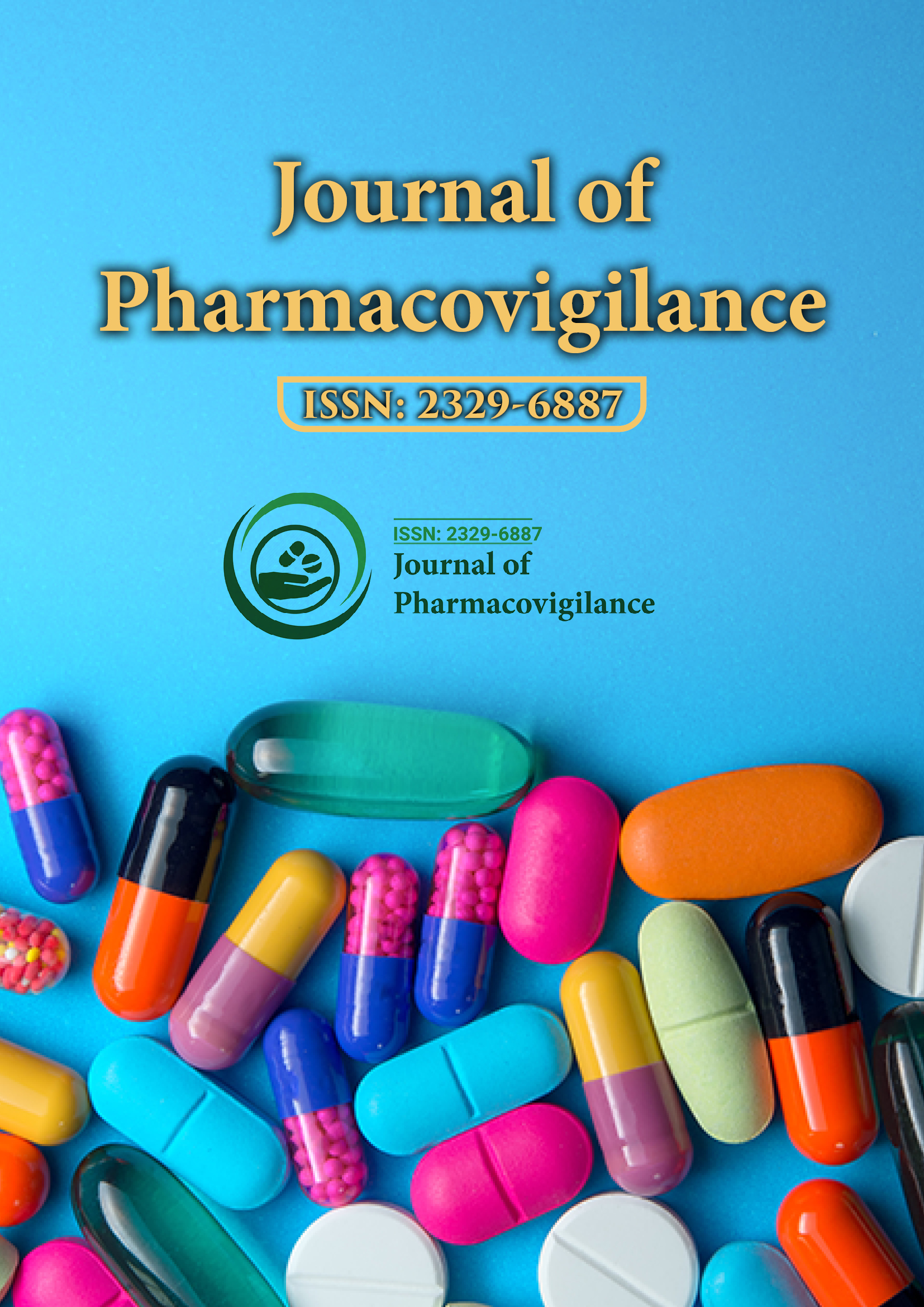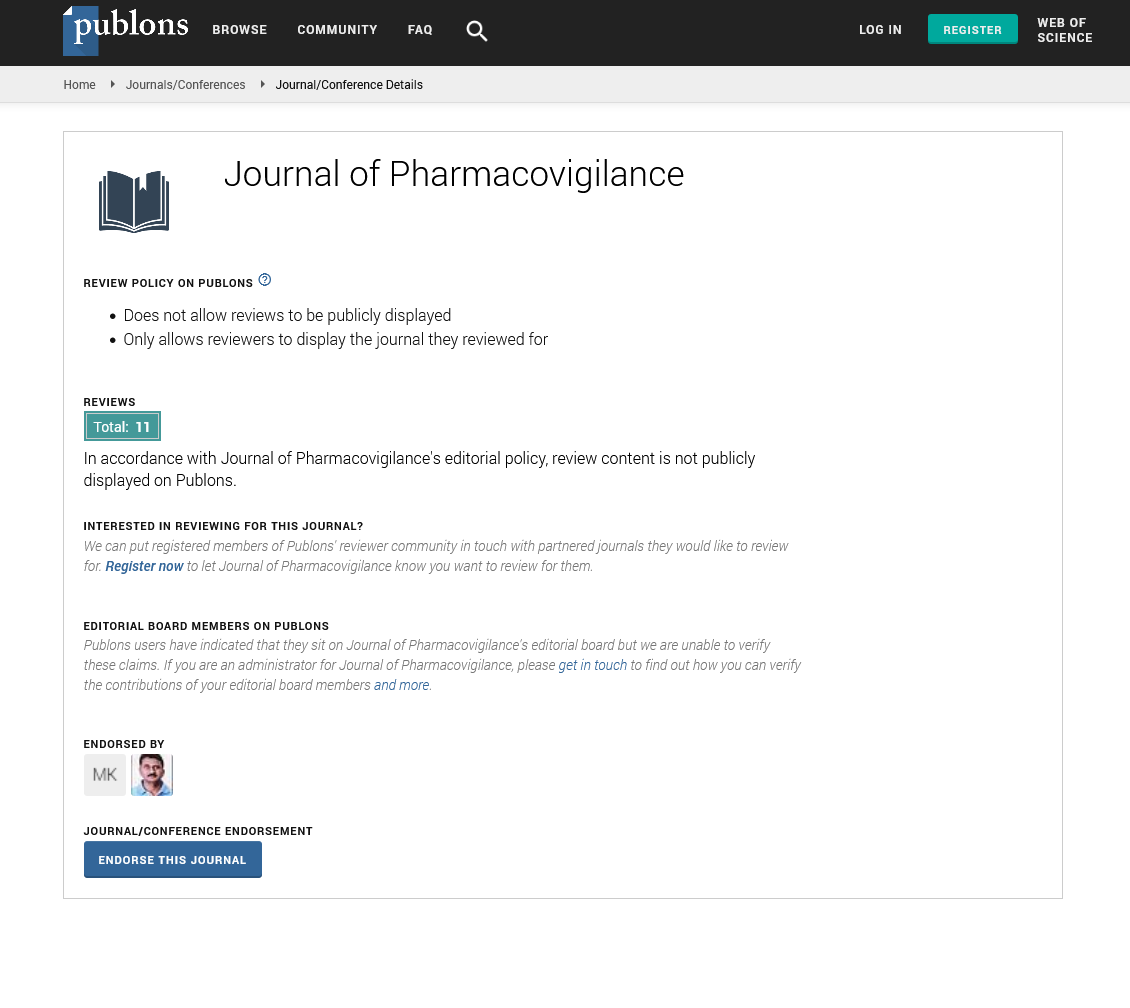Indexed In
- Open J Gate
- JournalTOCs
- The Global Impact Factor (GIF)
- RefSeek
- Hamdard University
- EBSCO A-Z
- OCLC- WorldCat
- Publons
- Euro Pub
- Google Scholar
Useful Links
Share This Page
Journal Flyer

Open Access Journals
- Agri and Aquaculture
- Biochemistry
- Bioinformatics & Systems Biology
- Business & Management
- Chemistry
- Clinical Sciences
- Engineering
- Food & Nutrition
- General Science
- Genetics & Molecular Biology
- Immunology & Microbiology
- Medical Sciences
- Neuroscience & Psychology
- Nursing & Health Care
- Pharmaceutical Sciences
Commentary - (2024) Volume 12, Issue 1
Challenges in Pharmacovigilance of Biologics and Gene Therapies
Difei Li*Received: 29-Feb-2024, Manuscript No. JP-24-25628; Editor assigned: 01-Mar-2024, Pre QC No. JP-24-25628(PQ); Reviewed: 15-Mar-2024, QC No. JP-24-25628; Revised: 22-Mar-2024, Manuscript No. JP-24-25628(R); Published: 29-Mar-2024, DOI: 10.35248/2329-6887.24.12.473
About the Study
The landscape of medicine is undergoing a change of opinion with the emergence of biologics and gene therapies. These revolutionary treatments offer unprecedented implement solutions for a vast array of previously untreatable diseases. However, ensuring their safety presents a unique set of challenges for pharmacovigilance, the science of monitoring drug safety. This article delves into the complexities of pharmacovigilance in the context of biologics and gene therapies, exploring the key hurdles and outlining potential strategies to navigate this unconventional approach.
The intricacy of biologics and gene therapies
Unlike traditional small-molecule drugs with well-defined structures and mechanisms of action, biologics and gene therapies possess inherent complexities that complicate safety monitoring. Biologics are often large, intricate molecules derived from living organisms, such as proteins, antibodies, or cells. Their variability in structure and function compared to small molecules makes it challenging to predict and track potential Adverse Events (AEs). Gene therapies, on the other hand, delve deeper, directly modifying a patient's genetic makeup to treat the root cause of disease. This innovative approach introduces novel safety considerations, as unintended modifications or unforeseen interactions with the patient's genome can have serious consequences.
Limited patient populations and the challenge of rare AEs
Biologics and gene therapies often target rare diseases or specific patient subpopulations. While this targeted approach offers immense therapeutic potential, it presents a challenge for pharmacovigilance. Clinical trials for these therapies typically involve smaller patient cohorts compared to those for conventional drugs. This limited data can make it difficult to detect rare but potentially serious AEs with statistical significance. The inherent rarity of the diseases these therapies target further complicates the issue, as the background incidence of certain AEs may overlap with the disease itself, potentially leading to under-reporting.
Traditional pharmacovigilance practices often rely on relatively rapid detection of AEs. However, the nature of biologics and gene therapies necessitates a shift in perspective. Unlike conventional drugs with a swift onset of action and side effects, these novel therapies may have delayed or long-term effects that may not manifest for months or even years after treatment. This necessitates long-term pharmacovigilance strategies that extend far beyond the initial clinical trial phase and encompass realworld patient experiences. Capturing these delayed AEs requires strong post-marketing surveillance programs and active follow-up mechanisms.
Patients receiving biologics and gene therapies often suffer from severe underlying conditions, adding another layer of complexity to pharmacovigilance. Disentangling AEs caused by the therapy from the inherent symptoms of the disease itself can be a formidable task. For instance, a patient receiving a biologic therapy for an autoimmune disease may experience fatigue or joint pain, which could be side effects of the therapy or a manifestation of the underlying autoimmune condition. This overlap can lead to under-reporting of AEs or misattribution of symptoms, potentially compromising patient safety and hindering accurate safety assessments.
The personalized medicine conundrum
The rise of personalized medicine, where therapies are customized to an individual's unique genetic makeup, introduces additional complexities for pharmacovigilance. Traditional pharmacovigilance methods, designed for standardized drug administration in large populations, may not be adequately equipped to capture AEs in these highly individualized treatments. The variable responses and potential for unforeseen interactions in personalized medicine necessitate the development of novel pharmacovigilance strategies that can effectively monitor the safety of these bespoke therapies.
A continuously evolving regulatory landscape
The regulatory frameworks conducting biologics and gene therapies are still evolving. This can create uncertainty for researchers, healthcare professionals, and pharmaceutical companies regarding pharmacovigilance practices and reporting requirements. Clear and consistent regulatory guidance is crucial to ensure comprehensive and standardized safety monitoring across different jurisdictions. Open communication and collaboration between regulatory bodies, researchers, and industry stakeholders are essential for developing strong and adaptable pharmacovigilance guidelines for these rapidly advancing therapies.
Strategies for navigating the challenges
Despite the aforementioned challenges, advancements are being made to bolster pharmacovigilance practices in the area of biologics and gene therapies. Some potential strategies include:
Leveraging Electronic Health Records (EHRs) and establishing comprehensive patient registries can facilitate the collection of real-world data on long-term safety profiles. These data sources can provide valuable insights into delayed AEs and offer a more holistic understanding of the therapies' safety in a broader patient population. Implementing active surveillance programs involving regular follow-up with patients receiving these therapies can significantly improve AE detection. These programs can go beyond simply collecting passive reports and actively engage with patients to identify potential AEs that might pretermitted.
Citation: Li D (2024) Challenges in Pharmacovigilance of Biologics and Gene Therapies. J Pharmacovigil. 12:473.
Copyright: © 2024 Li D. This is an open-access article distributed under the terms of the Creative Commons Attribution License, which permits unrestricted use, distribution, and reproduction in any medium, provided the original author and source are credited.

